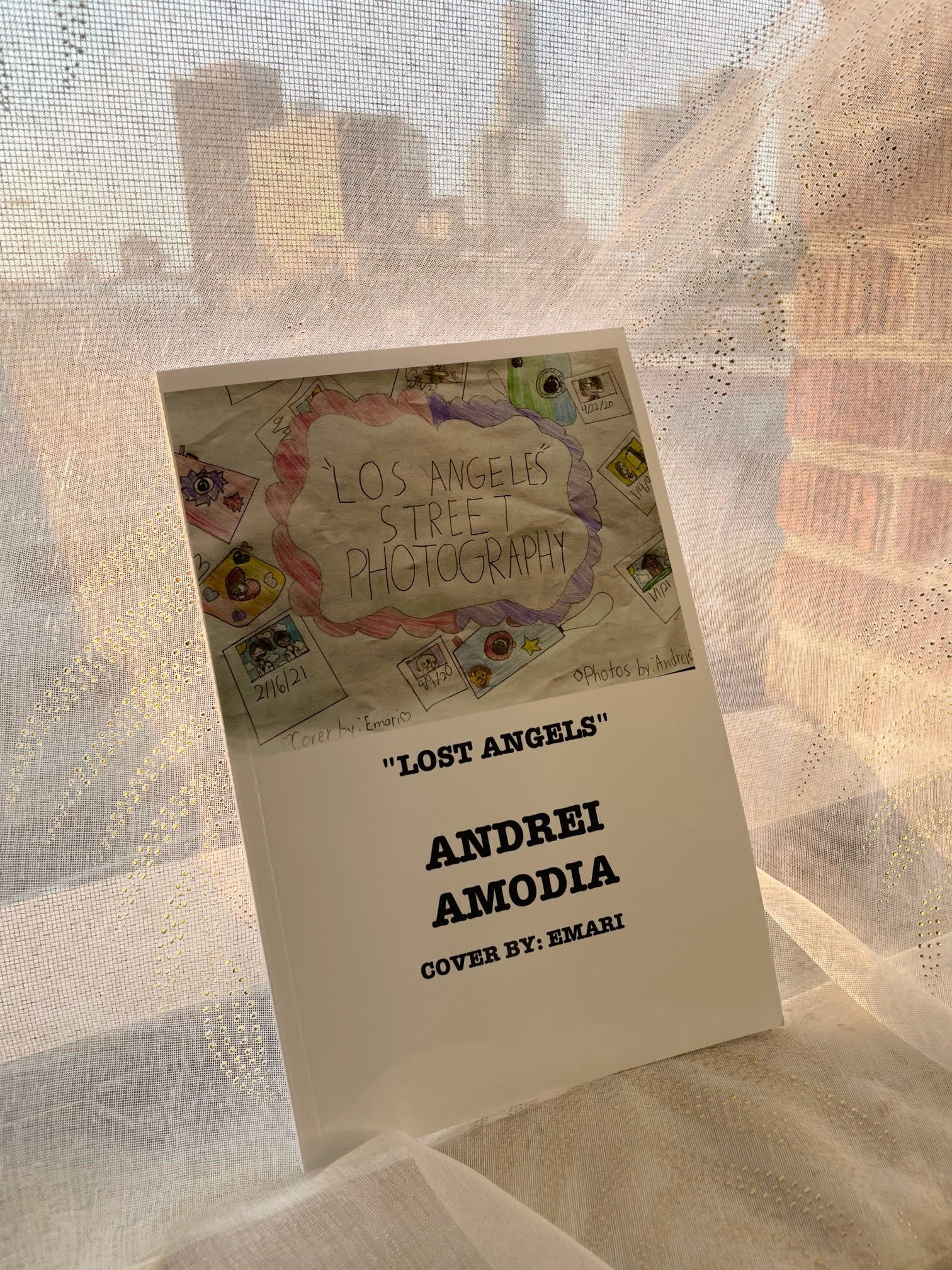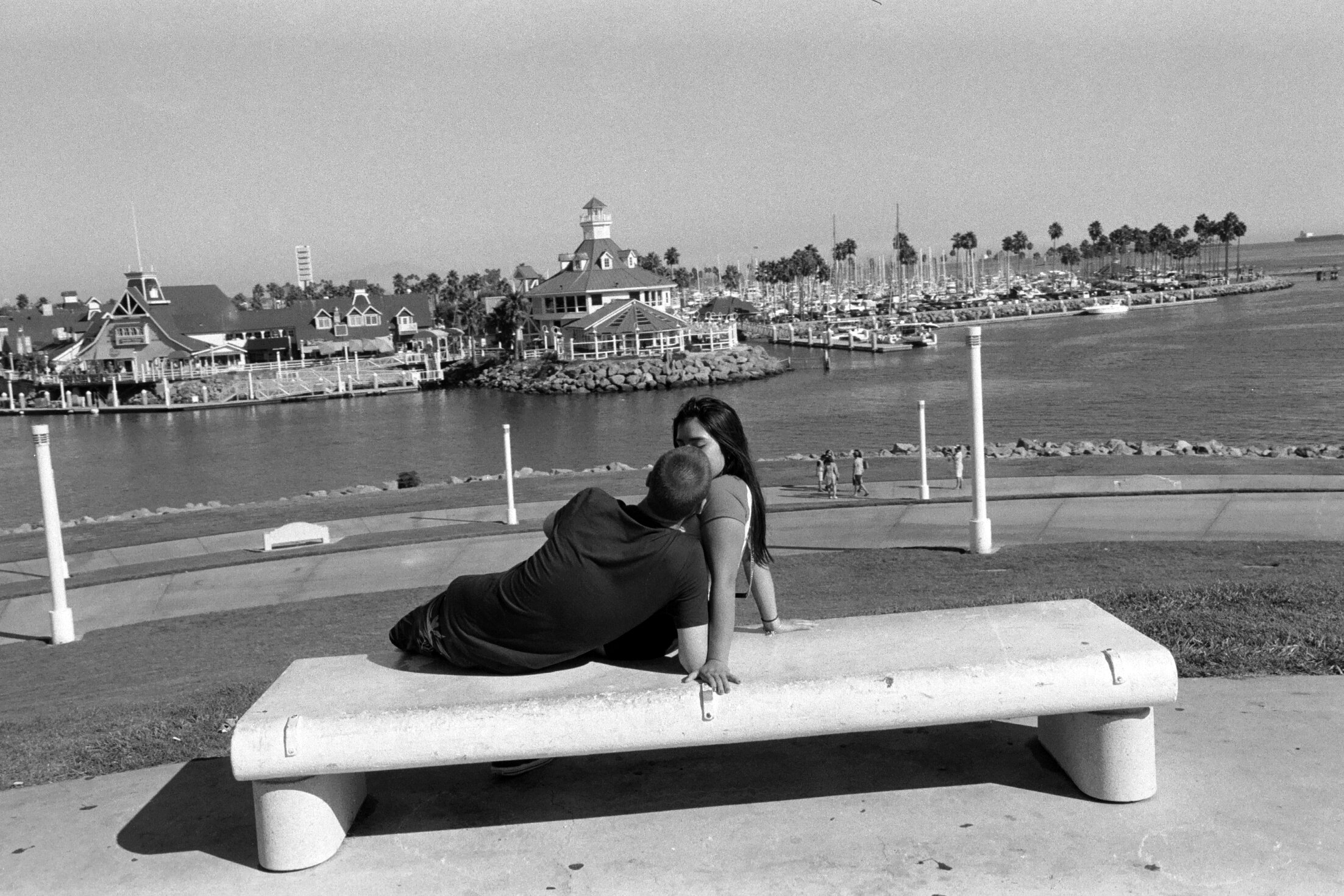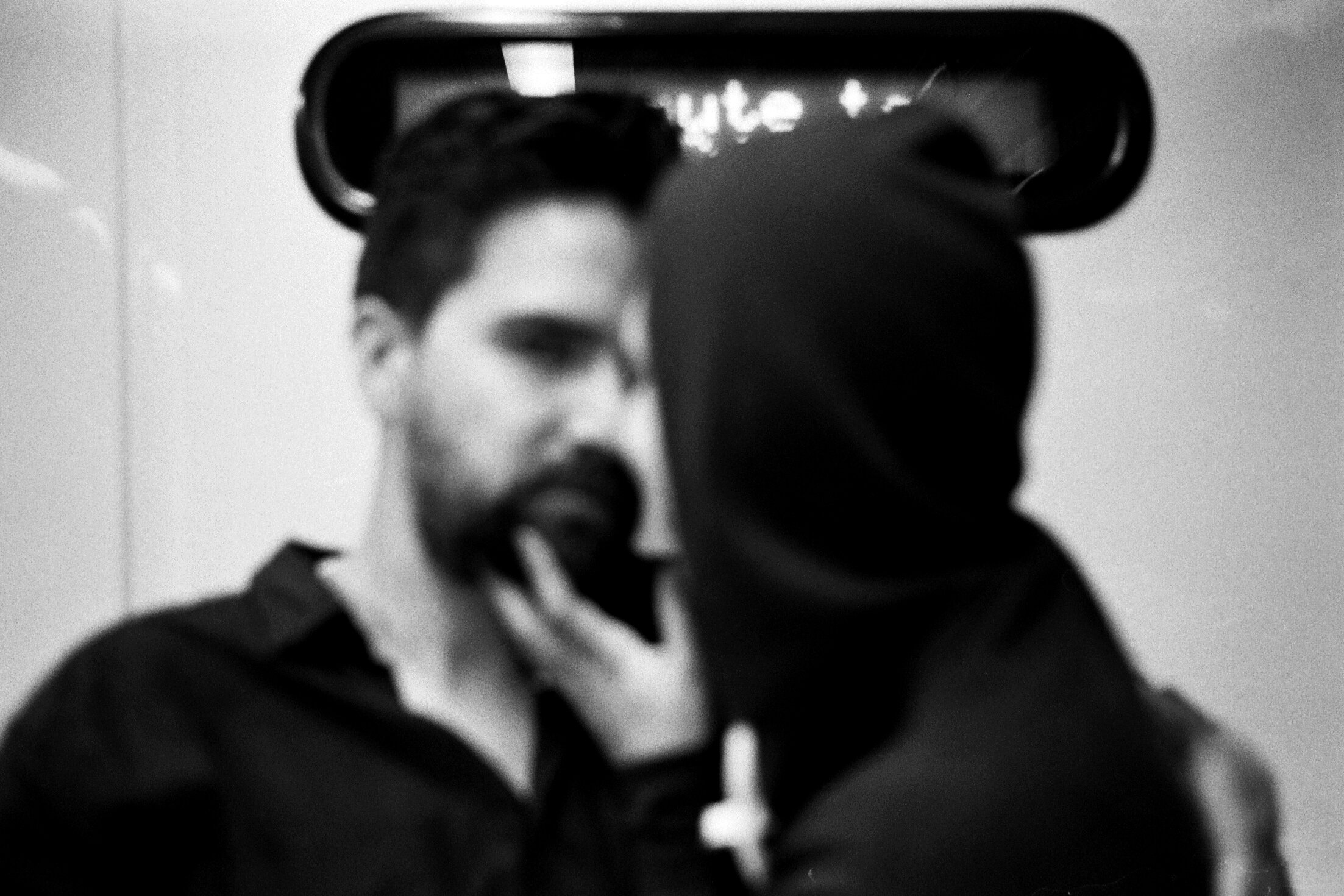Lost Angels: Andrei Amodia
PC: Andrei Amodia
Andrew D. McClees (ADM): For those who aren't familiar with you, or your work - could you introduce yourself?
Andrei Amodia (AA): My name is Andrei Amodia, I was born in the Philippines, and my family moved to LA in 1994; Since then, I go back and forth from LA and the Philippines. I was first introduced to photography in 2004, when a coworker of mine at Kip’s Toyland brought his camera with him to work, and my love for photography was ignited [by that interaction].
ADM: We're talking about Lost Angels - which is a book/zine of street photographs set in Los Angeles - is there a particular focus to the book (in your own words), and did you come up with the title or concept, before the photographs?
AA: The focus for this book is very simple - I just want to show my families and friends in the Philippines what America looks like from my point of view. At first I [shot] black and white but I thought color would show more detail and information for my family and friends to see - so I switched to color around 2014. I shot bnw from 2006-2010, though I did not do any photography 2011 - to early 2014. I came up with the title after the photographs - I am sure other people have used "Lost Angels" but I can’t think of any better title. The reason why I titled it Lost Angels is because I imagine people living in the city of angels (Los Angeles) are angels but none of us are doing any angelic stuff; so we are all “lost angels.”
ADM: What is the inspiration for the project, or this particular body of work?
PC: Andrei Amodia
AA: I can't really say I have an inspiration for this project because I was not really doing a project. Over the years as I have collected more photos I started to see something that could be put together into a book; but what really pushed me to make one is that I am in a situation that I don’t want to photograph anymore, unless I make a book/zine. In order for me to move forward and photograph the book/zine has to be done.
ADM: So looking forward, what do you think your next project will be, or will be about, now that you're committing to making books/zines as the core of your practice?
AA: There is a part 2 to My Lost Angels project - maybe 3 even, but I am planning to make a Photobook/zine for my Philippines photographs that I made late 2008- late 2010 before proceeding to the 2nd part of my Lost Angels photobook/zine project. There are other projects I want to put out such as the Black Queen project (portraits of black women) which is almost ready. [Another project in progress is] the torn faces project - these are posters of politicians that they posted during the election but did not take them down after, so the posters have deteriorated and made the faces look deformed - somehow this represents how corrupt they are in our country. These are just some [projects] that I have in my plans.
PC: Andrei Amodia
ADM: Oh fascinating - what makes the (potential) part 2 + 3 different from part one, or what did you get out of part one that you're using/approaching your subsequent projects with?
AA: It is not going to be totally different. It is most likely going to be a continuation of the first one - In part 1 it has 5 chapters and I had people write on a yellow paper what they can say about LA and added that to the book as a beginning to each chapter and, next to it photos of police doing their thing - Maybe I am going to do more of this in part 2 -- having people write. In each chapter I sequenced the photographs in a way so it will tell a short story, at least to me. So I think sequencing photographs to tell a short story in each chapter is what I learned or got from part 1. After reviewing some of the photographs that I didn’t use in part 1, that can stand on their own, I realized that they can be put together and make more short stories and put into a book/zine -- Short stories probably only I can understand. But it gives me guidance on how to arrange the photos.
PC: Andrei Amodia
ADM: What was your image selection process like for Lost Angels? And how did you sequence your book?
AA: I am not a very technical photographer - same goes when I am selecting images. I just select the ones that really stand out at the time of selection until I get to 60 images - then I group the ones that are kind of similar and sequence them in a way to make a really short story. This way, the sequencing of the images looks organized.
ADM: When you're out shooting (for this book, or otherwise) is there anything you think about, or focus on? A process?
AA: When I go out I don’t really think about making photographs - I have my camera with me all the time - even during those years I didn't really take any photographs (2010-2014.) I just go out and let the world happen and if I react to something that is the only time I think about really photographing until I am done with it. It could be street portraits, cityscapes, or landscapes, - even cars.
There are times I need motivation or a little push; that is when I tell myself I am focusing on portraits or landscape etc etc just to get me going. And I will tackle whatever I am planning to do that day, but I never say today I will do street photography for some reason - I guess that is my focus and process at the same time.
ADM: What specifically is it about the book form that you find suits your work?
PC: Andrei Amodia
AA: I did not really put a lot of thought [into] the book form - I just wanted something that is larger than a 5x7, and affordable to me and to whoever is interested.
ADM: If there were one image, or maybe even five images that were absolutely essential to understanding the book, or in this case that you'd show your family and friends in the Philippines to explain, which one would it be, and why?
AA: In the Philippines we think of America as this Glitz and Glamour world and it is as we see it through Hollywood movies. So I moved close to DTLA to capture the opposite of that and that is what I want to show them. If I were to pick an image or two, it would be the first image of the book, where two men giving the finger to the police and the police are waving back at them and the image on page 41 - a photographer taking a picture of a model while they are both on the ground and to the side there is a man digging in the trash and in the background there is a movie set a group of police cars on a car carrier.
PC: Andrei Amodia
AA: this image here [below] would probably explain a lot about Cebu, Philippines. We are a very Catholic country, and I believe the only country that doesn’t have a divorce law besides the Vatican City, because of our religion.
ADM: In terms of influence, are there any photographers or other artists who have influenced or shaped your work, either in your process or the photos you like to make?
AA: Yes, Henri Cartier Bresson has had a huge impact in how I work and so has Garry Winogrand. Richard Avedon and Diane Arbus also are a big part of my growth as a photographer. The most recent is Martin Parr -- Their photographs don’t really influence me (maybe a little) but their words, and how they work, influence me the most.
ADM: Do you have any specific favorite or influential Photobooks? Or have you mostly been working from your own template?
AA: There is a HCB book, and Garry Winogrand book (I do not remember the titles -- I have them in the Philippines and have not checked them since 2010.) I think these are very influential to how I photograph, and how I selected photos for the book - but the way I arranged the book I copied what Robert Frank said when he was doing the Americans.
PC: Andrei Amodia
ADM: What advice would you give to someone just starting out in street photography, or looking to document their surroundings? Is there any stand out piece of advice you've gotten or have found in your practice?
AA: I have not gotten any advice from anyone - photography has always been a solo thing for me. I mostly learned what I know from what I read about other well known photographers of the past. All I can say is if you want to do street photography, or any type of photography, is to just do it. Immerse [yourself] in all of the information [you] can gather and apply it. Eventually [you’ll] find [your] own way of photographing. But you got to have passion and obsession to actually grow as a photographer - without it you will not go anywhere.
ADM: From Al Palmer (of Brown Owl Press): What was the biggest single turning point for you as an artist?
AA: When I decided to leave black and white and just do color - it took some time for the transition to happen. That was the biggest turning point for me. I believe my thinking process changed when I switched to color - it is more open to more possibilities. Although I do just color now, color is not a deciding factor for me to take a photograph.
ADM: Where can we pick up copies of Lost Angels? and do you have any other parting words/shoutouts?
AA: Lost Angels is a self-published book of mine - I am not looking for anything big to come out from it. Right now direct messaging me in my instagram (@andreiamodia) or facebook is the only way to get a copy.

































